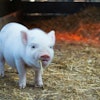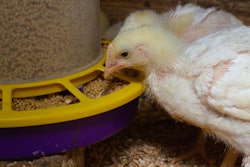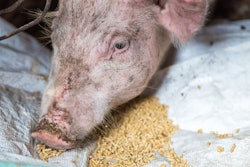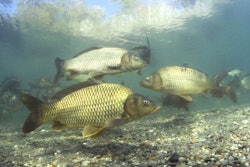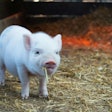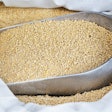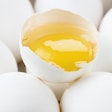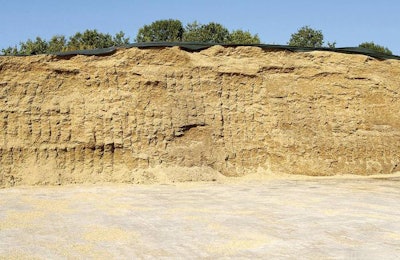
Although good for animal welfare, ad libitum feeding practice could cause environmental problems
The ad libitum feeding of silage to pregnant sows could be a good thing for animal welfare, but it could pose challenges for waste and environmental management, according to new research.
A paper published in Animal Feed Science and Technology suggests that while a group of pregnant sows fed ad libitum corn silage appeared quieter and more content, the ad libitum diet resulted in 1.6 times more waste slurry. This not only reduced the cleanliness of the animal pens — thereby posing another challenge to animal welfare — but could also require additional thought on how to manage the increased waste from hog farms, according to Peter Ebertz, the lead author and Ph.D. candidate at the University of Bonn.
“The better occupation during the day provides for improved animal welfare,” Ebertz said, “but at the same time there were approaches that such feeding has disadvantages in terms of resource use or the environment.”
In order to counteract these environmental drawbacks, Ebertz said, the first step was to quantify the increase in waste that resulted from the ad libitum feeding.
Ad libitum feeding is far from a new concept, but the practicalities in industrialized agriculture have caused the practice to essentially disappear, Ebertz said.
Yet Ebertz said he believes concepts could be developed at the farm level that could “mitigate these disadvantages and still enjoy the benefits of animal welfare.” Modern technology, he said, could enable farmers to manage the additional waste economically and effectively. For example, Ebertz said, his university research group has already tested a scraper robot capable of cleaning polluted pen floors. Alternately, he said, a change in floor or pen design could provide a solution by creating a defined area for the animals to use as a “toilet” that collects the waste.
“Now it is time to regain the advantages of silage feeding and to counteract them with mature technology,” Ebertz said. “As soon as the systems are optimized, they can be widely used in practice.”
Ebertz also said the study highlighted the need for more interdisciplinary research in agriculture.
“We have to abandon the idea of looking at areas of research — animal welfare, environment — only individually,” he said. “In a farm, all these aspects come together, and they influence each other, sometimes negatively.”
